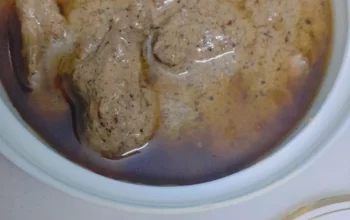Zoo is such a great place to take the kids for amusement. Not only do they love seeing the animals interacting, but there’s other fun things such as train rides, carousel rides and yummy treats.

Here, You will find a list of amazing animals beginning with ‘N’, together with pictures and interesting facts on each animal. Learn about all kinds of different animals. Given below are the animals starting with the letter ‘N’.
Discover animals beginning with. . . .

We’ve included both individual species whose names begin with N and well-known groups of animals that begin with N.
Numbat

Type: Mammal
Diet: Omnivore
Size: 35-45cm (13-18in)
Weight: 280-550g (9.9-19oz)
Top Speed: 24km/h (15mph)
Life Span: 4-8 years
Lifestyle: Sociable
The numbat is a small-sized marsupial. They are found across Southern Australia. They have strong front claws and long tongues. It has long, and colourful fur. They are prey to a number of larger, predatory animals such as foxes, snakes, dingos and feral cats. They spend the daylight hours hunting for termites and in the dark nights in hollow logs and burrows.
Narwhal

Type: Mammal
Diet: Carnivore
Size: 13 to 20 ft (4 to 6.1 m)
Weight: 3,500 lbs (1,600 kg)
The narwhal is the unicorn of the sea. These legendary animals have two teeth. They are found in the northern Atlantic Ocean, off the coasts of Canada and Greenland. The ivory tusk tooth grows right through the narwhal’s upper lip. They travel in groups and feed on fish, shrimp, squid, and other aquatic fare.
Nurse Shark

Type: Fish
Diet: Carnivore
Average lifespan: Up to 25 years
Size: 7.5 to 9.75 ft (2.2 to 3 m)
Weight: 200 to 330 lbs (90 to 150 kg)
Group: School or shoal
Nurse sharks are nocturnal and will rest on the seafloor during the day in groups of up to 40 sharks, sometimes piled on top of each other. They are slow-moving bottom-dwellers. They have very strong jaws filled with thousands of tiny, serrated teeth. They are found around the Caribbean Islands and from southern California to Peru on the American west coast. They are gray-brown and have distinctive tail fins.
Nutria

Type: Mammal
Diet: Omnivore
The average lifespan: 8 to 10 years
Size: Head and body, 17 to 25 in (43 to 64 cm); Tail, 10 to 16 in (25 to 41 cm)
Weight: 15 to 22 lbs (7 to 10 kg)
Group: Colony
The nutria’s yellow or brown outer hair looks shaggy and unappealing. They are large, web-footed rodents that are more agile in the water than on land. They live in burrows, or nests. They also feast on small creatures such as snails or mussels. They are strong swimmers.
Newt

Type: Amphibian
Diet: Omnivore
Average lifespan: Up to 25 years
Size: 7 in (18 cm)
Weight: 0.22 to 0.37 oz (6.3 to 10.6 g)
Top Speed: 42km/h (30mph)
Lifestyle: Solitary
The newt is a small amphibian. They are known best for their lizard-shaped body, with four legs and a long tail. They found naturally in North America, Europe and Asia. They eat small insects, fish and worms.

We aspire that you enjoyed the visit to the zoo. Visiting makes of fun to learn about various fantastic animals beginning with ‘N’. We get to know about the taste and habits of various birds and animals. It gave us a better and close-up view of them.
Stay Tuned for the next amazing zoo animal !!
This segment is part of the #BlogchatterA2Z challenge by Blogchatter




